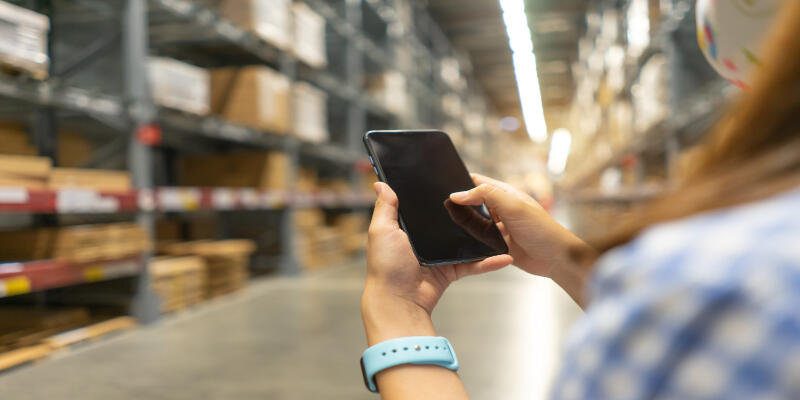Disclaimer: This post may contain affiliate links, meaning we get a small commission if you make a purchase through our links, at no cost to you. For more information, please visit our Disclaimer Page.
The rise of the use of smartphones mainly necessitates that you have enough data to maybe take you throughout the day or maybe for a month. But most times, you will receive texts that your data allocation is almost running out even though you are barely active online.
So, if the data running out is not because of our active media use, what might be the cause?
First, be sure that social media apps such as Instagram will consume most of your data. Also, most smartphones usually have the default settings in check, which overly rely on cellular data. Also, when the apps update without WiFi connection, your data will run out fast.
We will discuss why your phone is draining data fast. Different apps consume a certain amount of data, so we will help you determine which app drains the data and how you can determine this. In this article also, we will show you how to limit data usage from your phone. Let’s dive in!
Table of Contents
Why Is My Phone Consuming So Much Data?
Because you are spending so much time scrolling through your social media apps, nowadays, apps such as Instagram, Facebook, YouTube, and Whatsapp are the most commonly used apps and tends to use so much data.
Exchanging text messages through these apps will most likely not consume so much data, but when it comes to viewing photos and videos, then this is where all your data goes.
Videos on Instagram and Facebook play when using these apps, which eats up most of the data. We tend to spend a reasonable amount of time scrolling through social media, which is an excellent way to pass the time, but sometimes we realize the data that my phone gets consumed during this time is a lot.
The automatic playing of the videos explains this well because even when you are not watching the video, there is still some data consumption.
Also, you lose significant data when uploading and downloading videos.
It will drain your data fast, especially when you choose to download, say, YouTube or Netflix videos. While downloading will eat up your data, streaming consumes it up even more.
For instance, you watch a video on YouTube, which is okay, but remember you will bear the cost anytime you watch it. If you choose to download and watch it offline, your data usage will be much lower.
Auto-Updating the apps is another reason data drains out so fast. Usually, there may be constant updates from Google that happen automatically, therefore, using so much data.
The Google Play store app will automatically update these apps if you do not turn off the auto-update option.
Therefore, always ensure that you turn off the auto-update when you are not connected to WiFi. And if you download a video on YouTube, it will also automatically update after maybe 48 hours.
Also, if background data is on, it makes the phone deplete its data fast. Typically, background data makes app(s) renew any additional information and the app(s) will update itself.
For example, if you have the Instagram or Facebook app running on your phone, they will update themselves in case of any new posts or messages. You will also receive a notification of the update, comment, or status update which consumes data.
Auto syncing, which is almost similar to having background data, will make the data run out fast. The auto-syncing option is different depending on the device, and if it is on, it will use so much data.
Most phone experts, however, do not recommend it since it will change the functioning of the phone.
Another reason your data is running out fast is that you share data with other mobile devices. Tethering allows other computers or phones to use your data; hence, it may not last long compared to using it alone.
The same way your phone has background services running, If the other phones have this option, they can end up using so much data without your knowledge.
If you find that you turned off mobile data, but are still using it, check out this article here. It’ll help point out more specific solutions to this issue.
How Do You Find Out What Is Draining Your Data?
Almost all apps in your app use a certain amount of data, but the amount can vary depending on the app’s features and the amount of time you spend on each.
No matter the amount, it is essential to track the data that each app uses. From here, you can opt to make changes, especially if you are using a limited data plan.
Most smartphones can now show you the data usage on each app and identify the data hogs so that you do not use the app unless you have a WiFi connection. The process in android phones differs from that of the iPhone; here is how to find out!
iPhone
If you are using an iPhone, go to the settings menu and navigate to the Cellular option. You will see the “Cellular Data” option.
Here, you will see the data consumption of each app, and it will also highlight the apps that uses the most data with the amount. On the option “Last billing period,” you will see your phone’s data consumption for the last month.
Android
The process here is almost similar to what you do with an iPhone. Go to the phone’s settings, then click on data usage and navigate to the “Cellular data usage”.
Once you scroll down the page, you will see the apps that uses the most data, and you will also have a general view of the data consumption on each app.
You can check the settings on most apps to see if you can disable them to avoid using so much data. Most apps have a disabling option, and if it lacks such, you can uninstall it to avoid using much data.
When checking the app that drains my data fast, most are social media apps, especially if there is some configuration. An app such as Google+ will automatically eat up on your data because of its auto-backup feature.
How do You Stop Your Phone From Using So Much Data?
Use WiFi If Possible
Buying everyday data can be tedious, and the fact that it will deplete soon as you scroll through your phone makes it so dull. If you have a home WiFi connection, always ensure that you connect your phone to it and save on your data plan.
Well, I am sure most of us, including me, tend to forget to connect our phones to WiFi when we are at home or routine work.
You can also use public WiFi when out, but it may not be as safe as when using home or work WiFi. Either way, you will be saving your phone data from depleting.
While on WiFi, you get to enjoy unlimited time on social media without worrying about the data depleting. You can use the following tips to ensure you use public WiFi safely.
Turn Off Notifications
Notifications from social media apps may not be the main thing that drains your data, but you want to control the little things to save on something.
To receive a notification on apps such as Gmail or YouTube, you need to have data on your phone. It is essential to turn off the notifications from such apps, especially those you do not frequently use, to save on the data.
For Android users, you can turn the notifications off by going to the phone’s settings then select Apps and Notifications.
Go to the notifications option, and you will find the “Recently sent” option to show you the apps that have sent you notifications and turn them off.
For iPhone users, go to settings and navigate to notifications, then disallows the apps you want from receiving notifications.
Restrict Background data
Background data is one of the major reasons your data depletes fast since it runs even when you are not using the app. While having it on makes it easy for you to use your smartphone, restricting it makes you save much on data.
Usually, most apps will reload to update you on maybe the current posts or videos, which consumes much data. The automatic updating will eat up much of your data, and they also drain the battery.
Restrict Auto Update on Apps
Google play store is the common culprit for updating apps now and then. If this continues to happen, it continues to eat up much data regularly, and the best way to stop this is by turning off the auto-updates.
If you want the apps to update, it is wise to set them to auto-update when there is a WiFi connection. You can also adjust the updating time when you are sure you will have enough data for that activity.
Adjust Social Media Settings
Spending time on social media will require you to have so much data, which can be costly. One uses most data when watching big videos. Also, the quality of the video will determine the amount of data you will use.
In YouTube, for instance, if the video quality is set at 720, it will require more data than when set at 144.
Therefore, you need to adjust the settings to a much lower quality that will consume less data. This is especially helpful if you don’t really watch the video itself and just listen to it (podcasts & music).
Also, most social media apps will auto-play the videos in them by default, even when you are not watching them.
You can change the automatic playing in the settings by setting the auto-play option to either WiFi or to never autoplay the videos.
Monitor Devices Using Tethering
If you share your data with a particular device, ensure you check the functioning of the data in the app. You can use tools that will help you manage the data you are tethering.
Conclusion
Your phone data will always run out if you do not control it. If you spend much time on social media, try to cut it off, or better have a WiFi connection when using it. If WiFi is an issue, have an unlimited data plan and put the restrictions to help save the data.


